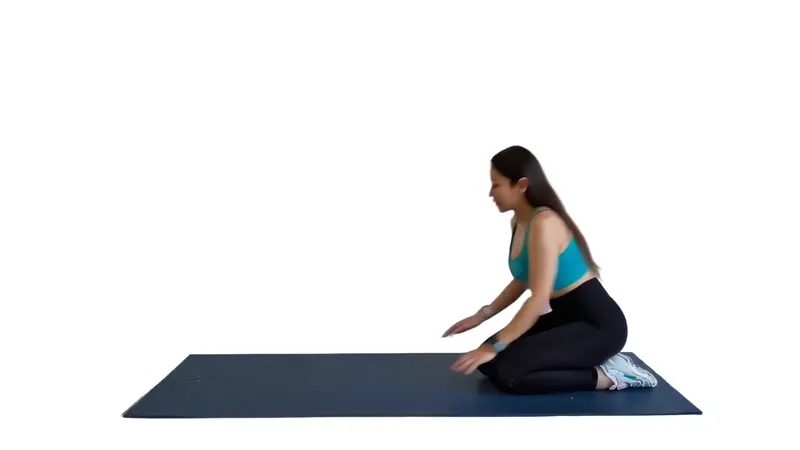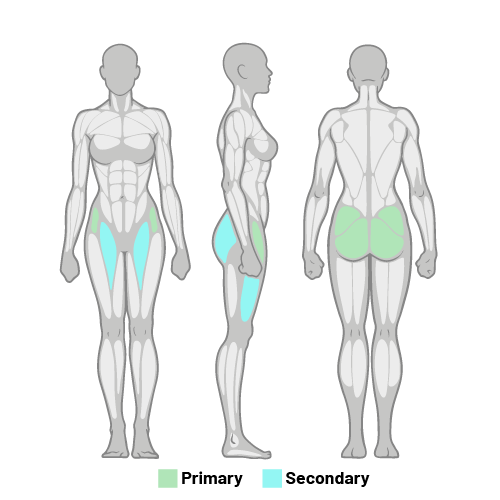Pigeon pose is a powerful stretch that helps unlock tight hips, release the glute muscles, and improve overall hip mobility. It’s a favorite among yoga practitioners, athletes, and anyone looking to relieve lower back pain while supporting long-term muscle recovery.
How To Do Pigeon Stretch With Proper Form

- Begin in a plank or downward dog position.
- Bring your right knee forward and place it behind your hands, shin angled slightly outward.
- Extend your left leg straight back with the top of the foot resting on the mat.
- Keep your hips square to the floor and chest lifted.
- Breathe and relax into this stretch.
Pigeon Pose Muscles Worked
The pigeon pose directly targets the hip joint and surrounding tissues. By bringing one leg forward and extending the other back, you lengthen the psoas muscle and hip flexors of the extended leg. At the same time, the bent leg stretches the piriformis and deep rotators of the hip. The pose also engages the sacrum and surrounding structures, making it effective for relieving tension that often contributes to lower back pain.

For a deeper dive into how hip muscles work together, see our guides on hip flexor exercises for seniors and hip abductor strengthening.
The pigeon pose primarily stretches and mobilizes:
- Glute muscles (gluteus maximus, medius, and minimus)
- Piriformis and deep hip rotators
- Hip flexors, especially the iliopsoas of the extended leg
- Psoas muscle, which can shorten from sitting or repetitive activity
This combination makes pigeon pose a total package for enhancing hip mobility and releasing stiffness throughout the lower body.
Benefits of Practicing Pigeon Pose
Regular practice of pigeon pose can offer undeniable benefits:
- Improved Hip Mobility: Loosens tight hip flexors and glutes.
- Lower Back Pain Relief: Reduces pressure on the lumbar spine.
- Muscle Recovery: Speeds post-workout recovery by increasing blood flow.
- Balance and Stability: Supports a strong hip joint foundation for walking, running, and sports.
For more research, see this clinical review on stretching and flexibility and HSS’s mobility resources.
Getting the Form Right (and Mistakes to Avoid)
The key to pigeon pose isn’t how low you can sink into the stretch—it’s how well you align your body. Start by keeping your hips square and your spine long. Avoid collapsing onto your bent knee; instead, use your hands or props to support your torso. If your hip doesn’t comfortably reach the floor, slide a folded blanket or yoga block underneath for stability.
Here are a few pitfalls to watch for:
- Forcing the shin forward: This puts unnecessary strain on the knee joint.
- Letting hips twist outward: This reduces the stretch to the piriformis and glutes.
- Holding your breath: Tension limits your ability to release into the pose.
When in doubt, go slow, breathe deeply, and let the stretch build over time.
Variations and Modifications
The pigeon pose can be adapted for different needs and levels:
- Seated Figure-Four Stretch: A gentler option lying on your back that reduces strain on the knees and sacrum.
- Chair Pigeon: Cross one ankle over the opposite thigh while sitting. Great for office workers needing a mobility break.
- Forward Fold Pigeon: Once comfortable, hinge forward over the bent leg to deepen the stretch.
- King Pigeon Pose: An advanced backbend where you reach back to grab the foot of your extended leg. This opens not only the hip flexors but also the chest and spine.
When to Avoid Pigeon Pose
While pigeon pose is widely beneficial, it’s not for everyone. Avoid or modify if you have:
- Recent knee or hip injuries that limit mobility.
- Severe sacrum or lower back pain aggravated by hip rotation.
- Pregnancy, unless cleared by a healthcare provider.
If pigeon pose doesn’t feel right, try alternative stretches like the IT band stretch flow for a safer option.
Unlock Your Hips With Sporty Doctor
The pigeon pose is more than a yoga stretch—it’s a proven way to relieve stiffness, ease lower back pain, and restore balance to the hips. Whether you’re recovering after exercise, building mobility for sports, or simply wanting to feel stronger as you age, this stretch can help you keep moving well.
Your body is built to move—so let’s keep it that way. Download the Sporty Doctor App today for physician-designed mobility workouts that help you unlock your hips, recover smarter, and stay active for life.














